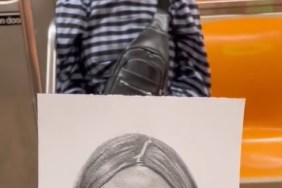Alexander Calder loved the circus. He also loved art. When you consider the man looked at his art as a source of joy and expression, it was only natural the two should meet.
The great American artist was as much a mechanical engineer as he was a sculptor or painter, and the balance and structure of circus acts fascinated him. While living in Paris in the late 1920s, Calder designed and built his own “circus acts” — small working sculptures, most of which actually performed some sort of traditional circus feat. He would even perform the show for Parisian artist friends and throughout his later life.
Also: Exhibit | Alexander Calder: Performing Sculpture – Tate Modern, London
Most of Calder’s Circus now resides in the permanent collection at the Whitney Museum of American Art in New York. The complete Circus included more than 70 pieces, and the curators at the Whitney pack a healthy amount of them into a circular exhibit space alongside looping film footage of Calder managing the “performers” in action.
This writer confesses this report is blatant favoritism as I enjoy and admire no artist more than Calder – and the Circus is my favorite of his works. In a fine art world so often dominated by pretentious statements, over-analyzed works and tortured souls, Calder always seemed to create for the fun and exploration of creation. In a sense, he was playing like an ingenious. During that period, where better for a child to play than a circus?

While Calder’s work are often described as whimsical or lyrical, they’re not silly or shoddy. Calder was a skilled engineer and hands-on craftsman. He was also a genius and visionary who blended his immense physical skill with solid scientific understanding of physics and design.
When engaged in his most serious work, he transformed sculpture with the invention of the Mobile and invented an entirely new way of sketching in three dimensions with wire. But, with his Circus, he’s having fun with his gifts.

The way the Whitney displays the Circus allows visits to get their faces up close to the glass and examine both the craft that went into making the figures and the wear and tear hundreds of performances left behind on them. There’s nothing wrong with heading off to examine the work of more dower artists when you’re done, but stop and enjoy the Circus.








